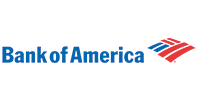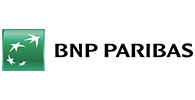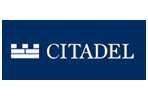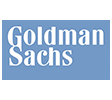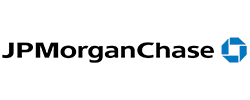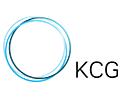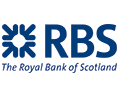FX Trading in May 2025: What’s Shaking Up the Markets and Your Trades?
Hey there, fellow traders! Stepping into the Forex market can feel like jumping onto a fast-moving train. Currencies go up, they go down, and sometimes it feels like they have a mind of their own. Especially now, as we head into May 2025, things seem… well, extra interesting.
You might hear fancy terms thrown around – terms like monetary policy divergence, persistent inflation, geopolitical headwinds. Sounds complicated, right? But don’t worry. Think of this article as your friendly guide.
We’re going to break down what’s really making currencies move right now, why May could be a particularly bumpy (or opportunity-filled) month, and what it all could mean for you, whether you’re just starting out or have been trading for a while.
Our goal isn’t to give you financial advice (nobody can predict the future perfectly!), but to help you understand the bigger picture. Knowing why things are happening is the first step to trading smarter and feeling more confident. So grab a seat, get comfortable, and let’s unpack the forces shaping the Forex world this May.
First Things First: Why Do Currencies Even Move?
Before we dive into the specifics of May 2025, let’s quickly refresh on the basics. Why doesn’t 1 Euro always equal, say, 1 Dollar and 10 cents?
Imagine currencies like any other product – their prices (exchange rates) are set by supply and demand.
Demand: If lots of people want to buy Euros (maybe to invest in European companies, buy European goods, or even just go on holiday), demand for Euros goes up. More demand usually means a higher price (the Euro strengthens).
Supply: If lots of people are selling Euros (perhaps to buy US Dollars for investments there), the supply of Euros increases. More supply usually means a lower price (the Euro weakens).
So, what drives this supply and demand? Actually, a lot of things like:
Economic Health: Is a country’s economy growing? Are people employed? Are businesses doing well? A strong economy usually attracts investment, increasing demand for its currency. Think of it like cheering for a winning team; people want to back a strong economy.
Interest Rates: This is a big one, and we’ll talk about it a lot more. Central banks (like the US Federal Reserve or the European Central Bank) set base interest rates. Higher interest rates can attract foreign investors seeking better returns on their money. To invest, they need to buy the local currency, increasing demand and potentially its value. Imagine putting your savings where you get the best interest, global money often does the same.
Inflation: This is how quickly prices for goods and services are rising. High, uncontrolled inflation is usually bad for an economy and its currency. Central banks often raise interest rates to fight inflation. We’ll see how this plays out soon.
Politics & Stability: Wars, political uncertainty, trade disputes can scare investors. When things feel unstable, money often flows out of a country or region, decreasing demand for its currency. Sometimes, money flows into so-called “safe-haven” currencies (like the US Dollar, Swiss Franc, or Japanese Yen) during troubled times.
Market Sentiment: Sometimes, it’s just about the general mood or “vibe.” Are traders feeling optimistic (risk-on) or pessimistic (risk-off)? This can influence where money flows.
Keep these basic ideas in mind as we explore the key themes for May 2025.
Key Driver Number 1: Central Banks Taking Different Roads? (Monetary Policy)
Okay, let’s talk about interest rates and central banks. Imagine the economy is a car. Central banks are like the drivers, using the accelerator (lowering interest rates to encourage borrowing and spending) and the brake (raising interest rates to slow things down and fight inflation).
Right now, the big story is that the major central banks seem to be driving at different speeds or considering different routes. This is what analysts mean by “divergent monetary policy.”
The US Federal Reserve (The Fed): Think of the Fed as the driver of the world’s biggest economic car (the US economy). They were hitting the brakes hard over the last couple of years, raising interest rates to fight high inflation. In their March 2025 meeting, they decided to keep the brakes lightly pressed – holding interest rates steady. They acknowledged the economy is doing okay, but inflation isn’t quite back to their 2% target yet. They also noted some uncertainty, partly due to potential new import tariffs (taxes on goods coming into the US) which could push prices up again. The market feeling is that the Fed might start gently easing off the brakes (cutting rates) later this year, but they’re being cautious and watching the data very closely. They’re in “wait-and-see” mode.
The European Central Bank (ECB): Driving the multi-country Eurozone car is tricky! The ECB also raised rates significantly but actually did ease off the brakes slightly in March 2025, cutting rates a little. They felt that inflation, while still a bit high in some areas (especially services), was generally heading in the right direction. However, the Eurozone economy hasn’t been growing as fast as the US, and there are concerns about things like trade uncertainty potentially slowing things down further. So, while they cut rates once, they were careful not to promise lots more cuts, saying they’ll decide meeting-by-meeting based on the latest information.
The Bank of England (BoE): The UK’s central bank is also in a tight spot. Like others, they raised rates to combat inflation. They have a meeting scheduled for May 8th, and traders are watching closely. Key inflation data, especially for services, coming out before that meeting will be crucial. If inflation cools down more, it might give the BoE confidence to signal or even make a rate cut. If it stays stubborn, they might hold off.
Why does this difference matter for Forex?
If one central bank (like the Fed) keeps interest rates relatively high while another (like the ECB) starts cutting them, money might flow towards the currency with the higher rates (in this example, potentially the US Dollar) seeking better returns. This could make the USD stronger against the EUR.
But it’s not always that simple! Expectations play a huge role. If the market expects the Fed to cut rates soon, the USD might weaken before they even do it. It’s a constant game of anticipation.
Heading into May, traders will be dissecting every word from central bankers and every new piece of economic data, trying to guess who will step on the gas, who will brake, and who will just coast for a while. This uncertainty can lead to volatility – bigger, faster swings in currency prices.
Key Driver Number 2: The Inflation Puzzle – Why Won’t Prices Just Behave?
Remember inflation? The rate at which prices go up? It’s been the big economic headache globally for the past few years. We all feel it when groceries, fuel, or rent get more expensive.
Central banks aimed to cool inflation down by raising interest rates (making borrowing more expensive, thus slowing spending). It has worked, partly. Inflation has generally fallen from its peaks.
However, it’s proving sticky. It’s not dropping back to the “normal” 2% target as quickly or smoothly as hoped.
In the US: While inflation has come down, the Fed noted in March that progress might be slowing, and they even raised their forecast slightly for 2025, partly blaming potential tariffs. Recent data before May will be intensely scrutinised. Is inflation truly under control, or could it flare up again?
In the Eurozone: The ECB sees inflation generally moving the right way, but “domestic inflation” (price rises generated within the Eurozone, especially in services) remains high. Wages are still catching up from the previous price surge, which could keep service costs elevated.
In the UK: Service sector inflation is the BoE’s main worry. Is it cooling fast enough to allow rate cuts? The April inflation data (released before the May meeting) will be a major clue.
How does sticky inflation affect FX trading?
Keeps Central Banks Cautious: If inflation stays stubbornly above target, central banks might delay cutting interest rates, or even hint at needing to keep them higher for longer. This could support their currencies (or at least prevent them from weakening as much as expected).
Creates Data Sensitivity: Every inflation report becomes a major market event. If inflation comes in hotter than expected, currencies might jump as traders bet rates will stay high. If it’s cooler, currencies might fall as rate cut expectations increase. This leads to volatility around data releases.
Impacts Real Returns: Traders also look at “real” interest rates (interest rate minus inflation). If inflation is high, it eats away at the real return on holding a currency, potentially making it less attractive even if nominal interest rates are decent.
In May, expect markets to react strongly to any inflation news from major economies. Is the disinflation story still on track, or are we facing bumps in the road? The answer will heavily influence central bank thinking and currency movements.
Key Driver Number 3: Global Headaches – Politics, Conflicts, and Trade Battle
The world outside of pure economics plays a huge role in Forex. Political instability, conflicts, and trade disagreements create uncertainty, and markets hate uncertainty.
Think of it like planning a picnic. If the weather forecast is unpredictable – sunny one minute, thunderstorms the next – you feel less confident about your plans. Similarly, geopolitical uncertainty makes investors nervous.
Here are some headaches markets are dealing with heading into May 2025:
Trade Tensions & Tariffs: A big theme is the potential for increased trade friction, particularly involving the US. Talk of new or higher tariffs on goods from major partners like China, Canada, and Mexico has been swirling. Tariffs can disrupt trade flows, potentially hurt the economies of exporting countries (weakening their currencies like the Canadian Dollar, Mexican Peso, or Chinese Yuan), and also contribute to inflation in the country imposing them (like the US). This adds a layer of complexity and uncertainty to economic forecasts and currency outlooks.
Ongoing Conflicts: Sadly, conflicts like the one between Russia and Ukraine continue, impacting energy prices, grain supplies, and general global stability. Tensions in other regions, like the Middle East, also remain a concern, potentially affecting oil prices and risk sentiment.
Political Uncertainty: Elections and governmental shifts in major economies can lead to policy changes that affect markets. For instance, new governments in the US and potentially evolving political landscapes in Europe (like France and Germany mentioned earlier in the year ) add to the list of things traders need to monitor.
How does this impact FX?
Volatility Spikes: Sudden geopolitical events often cause sharp, immediate reactions in currency markets.
Safe-Haven Flows: During times of high uncertainty or fear, traders often sell riskier assets and currencies (like emerging market currencies or commodity currencies like the Australian or Canadian Dollars) and buy perceived “safer” ones. The US Dollar (USD), Swiss Franc (CHF), and Japanese Yen (JPY) are traditional safe havens. Watch these currencies for potential strength if global tensions rise.
Economic Impact: Trade disputes and conflicts can directly harm economic growth, which, as we discussed, tends to weaken a country’s currency over the medium term.
Commodity Prices: Geopolitical events often affect the prices of commodities like oil. Currencies of major oil exporters (like the Canadian Dollar – CAD, or Norwegian Krone – NOK) are sensitive to these price swings.
For May 2025, keep an eye on news headlines related to trade negotiations, developments in conflict zones, and any major political shifts. These “non-economic” factors can sometimes overshadow purely economic data in driving currency moves.
What Might This Mean for Major Currencies in May?
Okay, let’s connect the dots. Given these big drivers – differing central bank paths, the sticky inflation puzzle, and global uncertainty, what could we potentially see in some key currency pairs? Remember, this is about understanding possibilities, not prediction!
EUR/USD (Euro vs. US Dollar): This is the most traded pair globally. The main tension here is the Fed vs. ECB policy difference. If the market continues to believe the ECB is more likely to cut rates further/faster than the Fed (due to weaker Eurozone growth and maybe slightly better inflation progress ), the EUR could struggle against the USD. However, if US inflation data disappoints (stays high), delaying Fed cut expectations, or if Eurozone data surprises positively, the EUR could find support. Geopolitical risks might also favour the USD as a safe haven. Expect this pair to react sensitively to inflation data and central bank comments from both sides.
GBP/USD (British Pound vs. US Dollar): Often called “Cable,” this pair will be heavily influenced by the UK inflation data release and the subsequent BoE meeting in early May. If data supports a BoE rate cut, the GBP could weaken against the USD (assuming the Fed stays put for now). Conversely, sticky UK inflation could keep the BoE cautious, potentially supporting the Pound. Trade news and general risk sentiment also play a role here. Recent price action showed GBP strength, but data will be key.
USD/JPY (US Dollar vs. Japanese Yen): This pair is often driven by interest rate differences and risk sentiment. The Bank of Japan (BoJ) has kept interest rates extremely low for a very long time, unlike the Fed. If the Fed keeps rates relatively high, this difference tends to support USD/JPY. However, the Yen also acts as a safe-haven currency. If global uncertainty spikes significantly, money might flow into the JPY, potentially strengthening it (pushing USD/JPY lower), even if interest rates favour the USD. Watch US interest rate expectations and global risk mood closely for this pair.
AUD/USD & USD/CAD (Aussie/Loonie vs. US Dollar): The Australian Dollar (AUD) and Canadian Dollar (CAD) are often called “commodity currencies” because their economies are sensitive to commodity prices (like iron ore for AUD, oil for CAD). They are also generally considered “risk-on” currencies, meaning they tend to do better when investors are optimistic and global growth looks good. In May, they could be caught between conflicting forces. If global growth fears rise or trade tensions escalate (especially involving the US/Canada/China ), these currencies might weaken against the USD. However, if commodity prices hold up and central banks like the Reserve Bank of Australia (RBA) or Bank of Canada (BoC) sound less likely to cut rates than expected, they could find support.
Tips for Navigating the May Market (Especially for Beginners)
Feeling a bit overwhelmed? That’s perfectly normal! Forex is complex. Here are a few simple ideas to keep in mind as you navigate the potentially choppy waters of May:
Risk Management is King: This is non-negotiable. Never trade money you can’t afford to lose. Use stop-loss orders to limit potential downsides on your trades. Start with smaller trade sizes until you feel more comfortable. Volatile markets can move quickly, so protecting your capital is priority number one.
Stay Informed (But Don’t Obsess): Keep an eye on major economic news releases (inflation data, central bank meetings, GDP figures) using an economic calendar. Understand when key data is coming out, as volatility often increases around these times. Follow reputable financial news sources. But don’t get glued to the screen 24/7 – information overload can lead to impulsive decisions.
Keep it Simple: As a beginner, focus on understanding one or two currency pairs well rather than trying to trade everything. Stick to a simple trading strategy that you understand and have tested (even on a demo account).
Understand Leverage: Forex trading often involves leverage, which means you can control a large position with a smaller amount of capital. While this magnifies potential profits, it also magnifies potential losses. Understand how leverage works and use it cautiously.
Use Resources: Take advantage of educational materials provided by FXCG – webinars, articles, tutorials. Learning is an ongoing process in trading.
Patience is a Virtue: Don’t feel pressured to trade constantly. Sometimes the best trade is no trade at all, especially if the market feels too uncertain or choppy for your strategy. Wait for clear opportunities that fit your plan.
Wrapping Up: Making Sense of the Noise
So, May 2025 in the Forex market looks set to be shaped by a fascinating mix of forces. We have central banks potentially taking different turns on the road, inflation proving a bit stubborn, and the ever-present backdrop of global events adding twists and turns.
For traders, this means potential volatility, which translates to both risk and opportunity. The key isn’t to have a crystal ball, but to understand the main themes driving the market, watch for key data points, manage your risk carefully, and stick to your trading plan.
Don’t let the complexity scare you. Break it down, focus on the fundamentals we’ve discussed, keep learning, and approach the market with a clear head. Whether the market zigs or zags in May, being prepared and informed is your best tool.
Happy trading, stay safe, and here’s to navigating the markets together!
before: FXCG Expiring Futures CFD Contracts Schedule 2025-05
next: How Will Forex Markets Handle the 2025 US-China Trade War?
